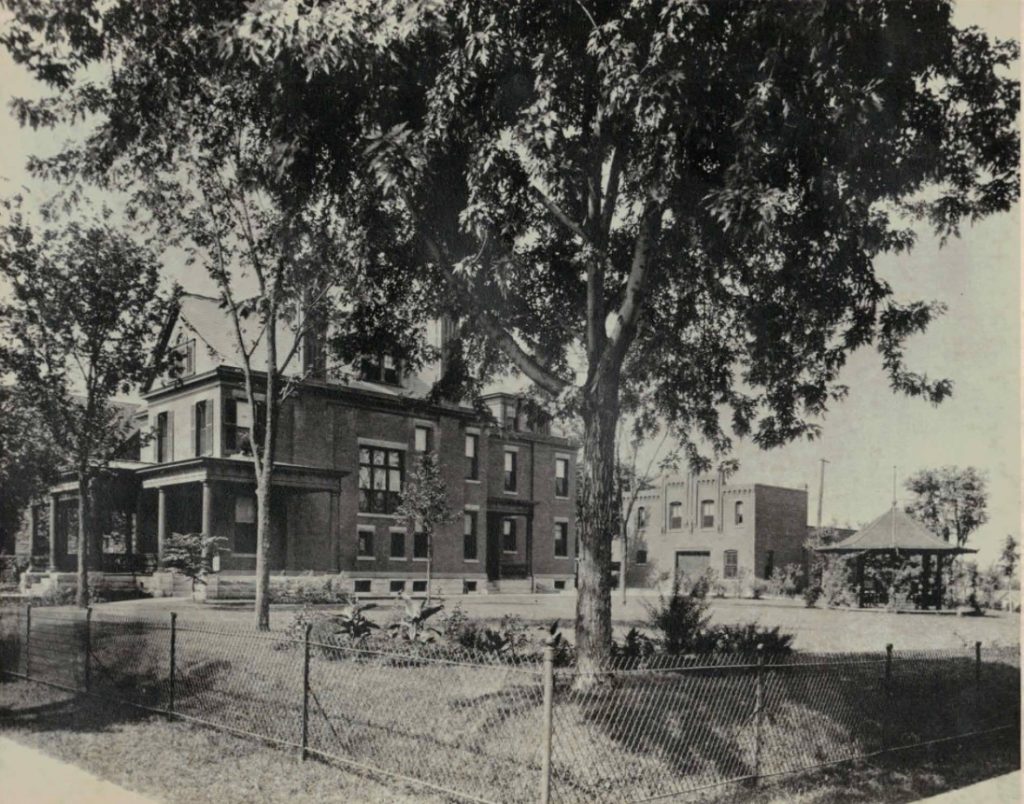
On a North Hyde Park block where a large steel tank once drew patients to a groundbreaking sanitarium, captains of the Kansas City industry built their homes in the waning years of the 1800s. New homes, both rental and owner-occupied, filled the block during the early 1900s. The large homes housed extended families and their servants in the early years and were converted to boarding houses by the 1930s.
As part of our Uncovering History Project, the Midtown KC Post is examining each block in Midtown. A set of 1940 tax assessment photos is available for many blocks.
Last week, we took an in-depth look at 3310 Harrison, where a steel tank used for health treatments. In this post, details about the history of the rest of the block from 33rd to 34th between Campbell and Harrison.
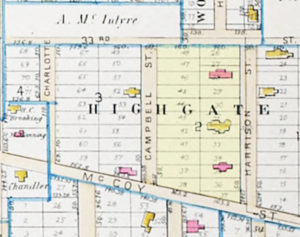
An 1891 map of the block.
Early Residents of this Hyde Park Block
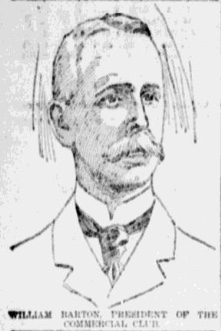
William Barton.
The Highgate subdivision was platted in 1888 and the earliest homes on the block were built on Harrison Street a few years later. Perhaps the best known early resident was William Barton, who lived at 3310 Harrison. Barton’s family founded the Barton Brothers Shoe Company, one of the largest shoe factories in the Midwest, which operated at Eighth and Washington downtown until the Bartons sold it to a St. Louis firm in 1913. Barton is listed as the president of the Barton Hat Company in his 1917 obituary.
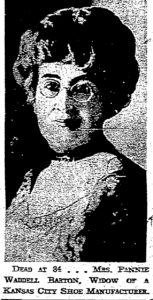
Fannie Barton, William’s wife, was the daughter of John W. Waddell, a member of the firm of Russell, Majors & Waddell, who in 1850 established the first freighting company over the Santa Fe Trail and founded the Pony Express.
The Bartons had an active social life in Kansas City society. Their home was the site of large dance parties and meetings of various clubs. William was head of the Commercial Club from 1897-98 and was later appointed to the Park Board to replace S. B. Armour. Mrs. Barton was active in the Women’s City Club, Daughters of the American Revolution, and Daughters of 1812.
The 1900 census shows William and Fannie living at 3310 Harrison with two daughters, a son, and servants Louise Lyle, Mary Anderson, and Burns Wilson.
Neighbors on the block that century included: at 3328 Harrison, Edward H. Morgan, 45, a jewelry broker, wife Alice J., a son, a daughter, a nephew, and two Swedish servants, Annie Anderson and Mena Lingren; and at 3315 Campbell, Jacob Bayse, 59, no occupation listed, wife Mattie, two daughters, three sons, two nephews, and a servant named Minnie Brown.
More Homes Fill the Block Before 1910
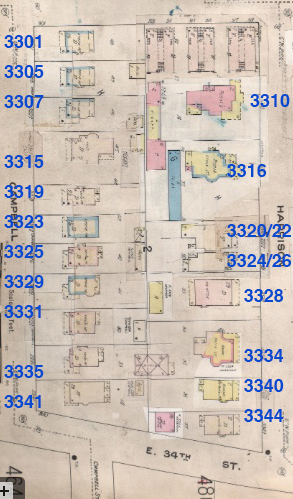
A 1909-1950 Sanborn map of the block.
As rapid growth in Midtown continued, new homes were added. Construction after 1900 was mainly in the Kansas City Shirtwaist style, and a number of the homes were rented rather than owned by the families that occupied them. Most of the residents of the block were families with several children. Several had servants who were immigrants or American-born white or black workers.
By 1910, when census workers returned, William and Fannie Barton were still living at 3310 Harrison with their three children as well as a white housekeeper Davie Davis, a mulatto chauffeur Mathew Barbee, a black coachman Henry Brown and a white cook Dora Faley. The Morgans were still there with their children and maid, Annie Anderson.
Others on the block included:
- Mary Piper, 66, widow of Colonel James Piper, with Swedish cook Anna Helberg and boarder Ruth Helberg.
- Mary Askew, widow, and her maid, Olive Sperry, plus two boarders, John Rowland, a real estate man, and George Grissom, a packing house accountant.
- James Brady, 36, a real estate man, and his wife Minnie.
- Louis Meyer, 51, is a wholesale grocery merchant; his wife Friederika, a daughter and a son; maid Rose B. Stuermer; and cook Clorinda Dovian.
- John T. Stone, 57, was a hardware merchant, and his wife Estelle had two sons, a daughter, and a daughter-in-law.
- Charles Potts, 35, a real estate business owner, his wife Maude, a daughter and a son.
- Scotty Bledsoe, 48, a real estate business owner, his wife Etta and a step-son named Walter Seaman, a real estate bookkeeper.
- F. Lyons, 46, an ice manufacturer, his wife Anna, a sister-in-law named Jennie Lee Holmes, a white maid Anna Samsaw and a mulatto coachman James W. Clouden.
- Lawyer Francis Hayward, 54, his wife Kate, a son and a daughter.
- Fire insurance agent Willis Creighton Tabb, wife Abbie, a daughter and two sons, and a black servant Maggie Walters.
- Grain broker Edward S. Jones, 48, his wife Caroline, three daughters, a son-in-law and a granddaughter.
- Real estate business owner Lucian Morrison, wife Mary, a son, and black servant Lucy Browning.
- Railroad manager Charles T. Neal, 48, wife Dus, a daughter and two sons.
- Bell Telephone Company general superintendent William Johnson Jr., 47, wife Amelia and two daughters.
- Government contractor John W. O’Rourke, 48, wife Josephine, a son and three daughters.
In the 1920s, the Cunningham Sanitarium had moved into 3310 Harrison, offering hope to people with some diseases but garnering complaints from surrounding property owners. Census records show households with fewer family members and servants, but it was becoming common for the large homes to include several boarders. Lelia Gilliam, 40 and single, owned a boarding house at 3325 Campbell that included 10 boarders and two black servants, James and Stella Trice. In the 1930s, 3310 Harrison and other homes on the block had been converted into kitchenette apartment residences.
Apartment buildings were also squeezed into the north end of the block where there had been vacant property.
The photos below show the homes and apartments on the block as they looked in 1940.
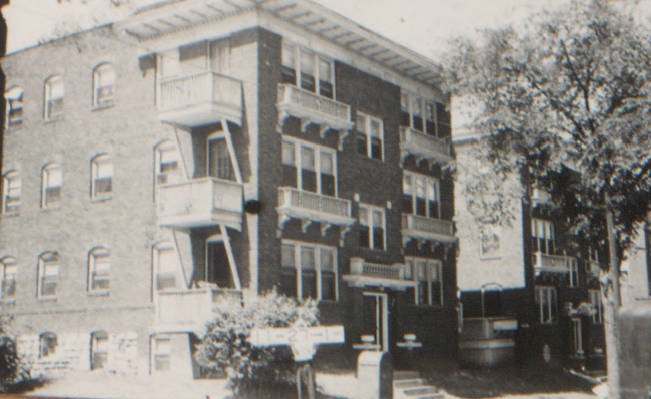
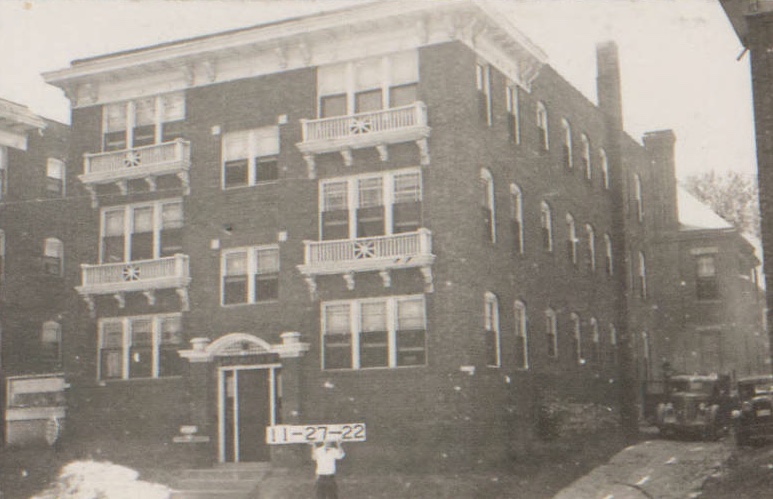
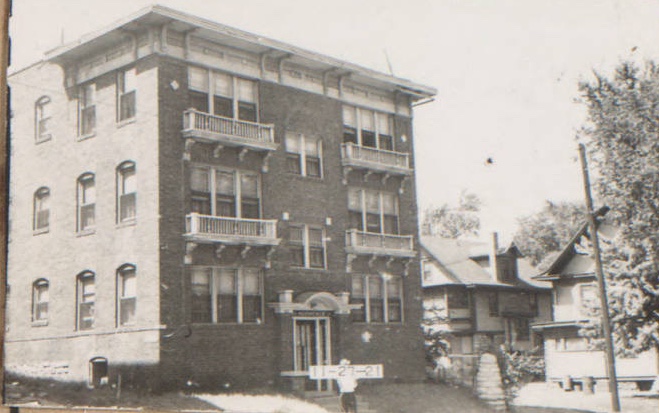
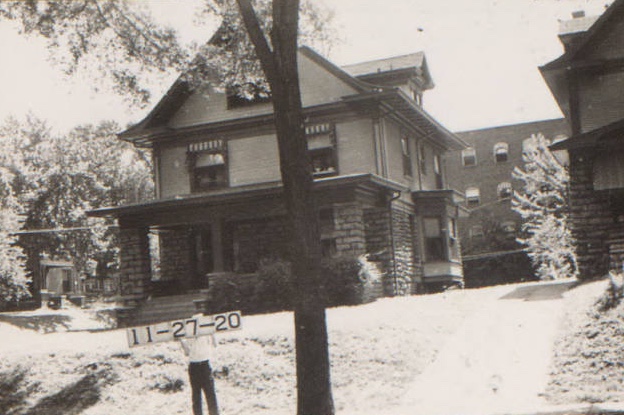
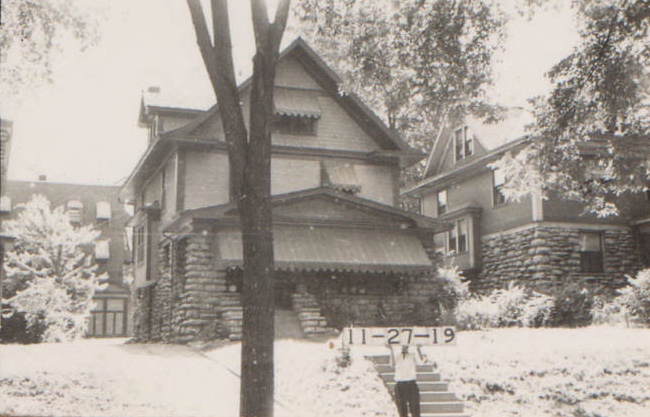

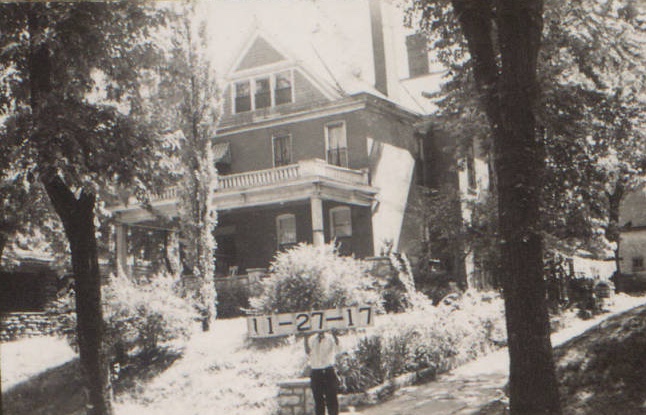
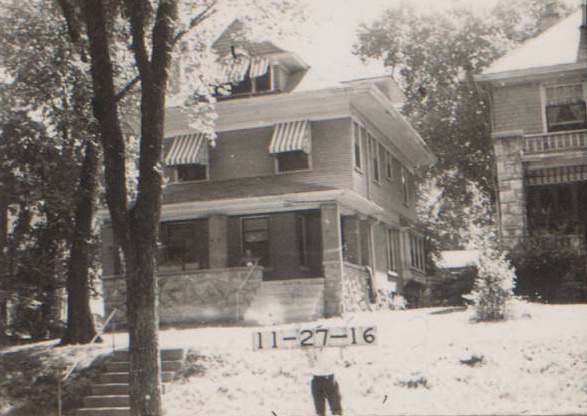
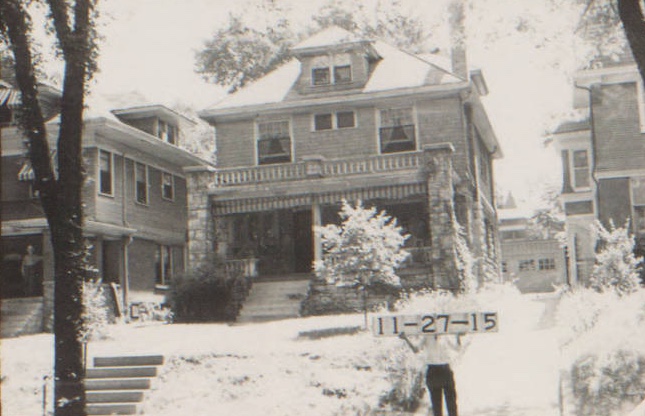
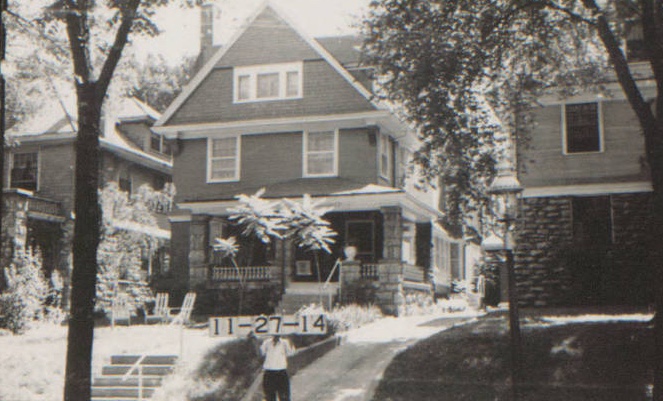
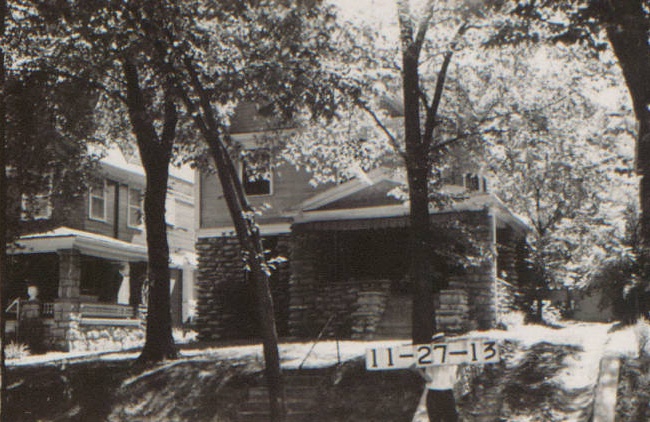
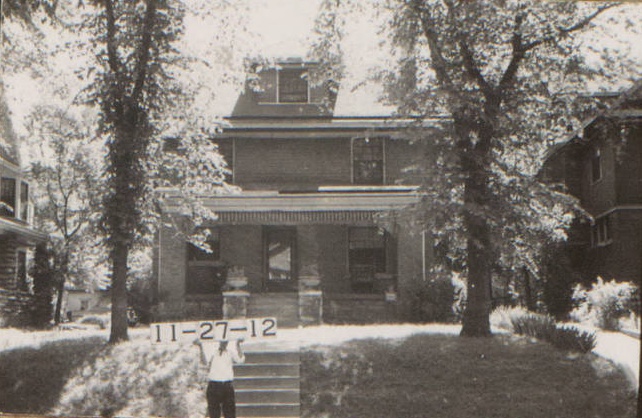


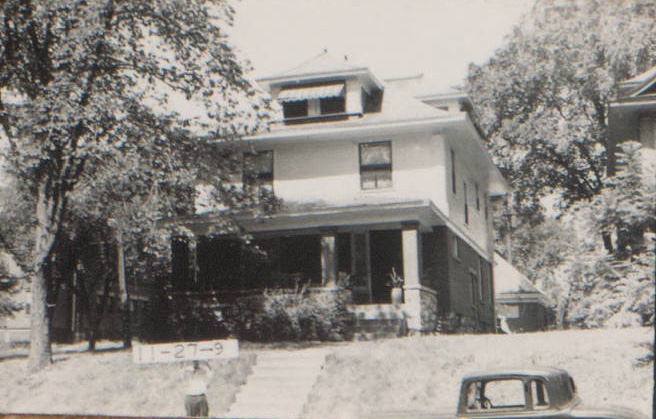
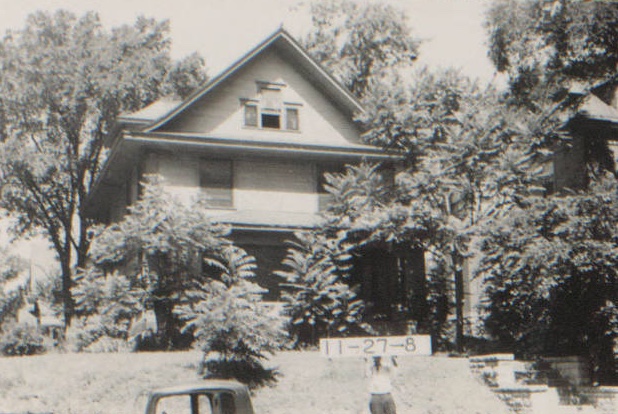
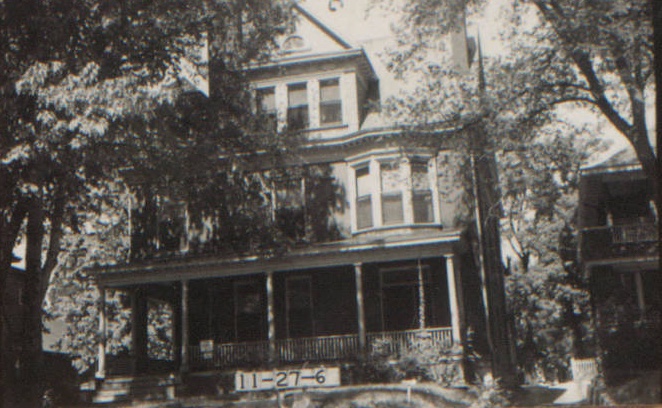
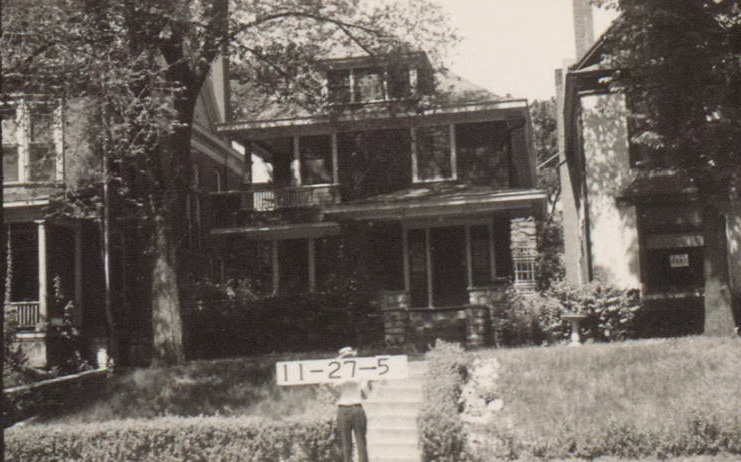
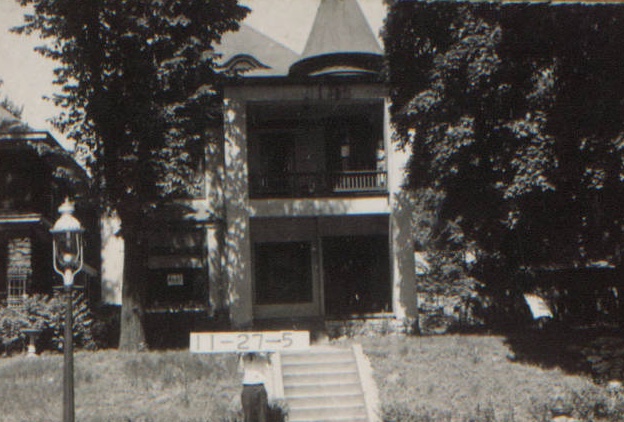
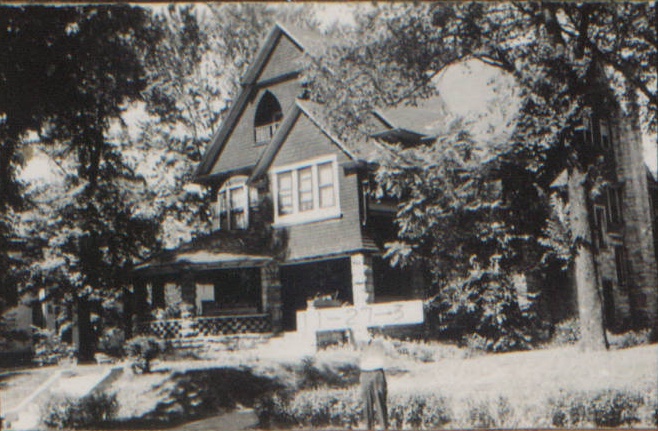

Historic photos courtesy Kansas City Public Library/Missouri Valley Special Collections.